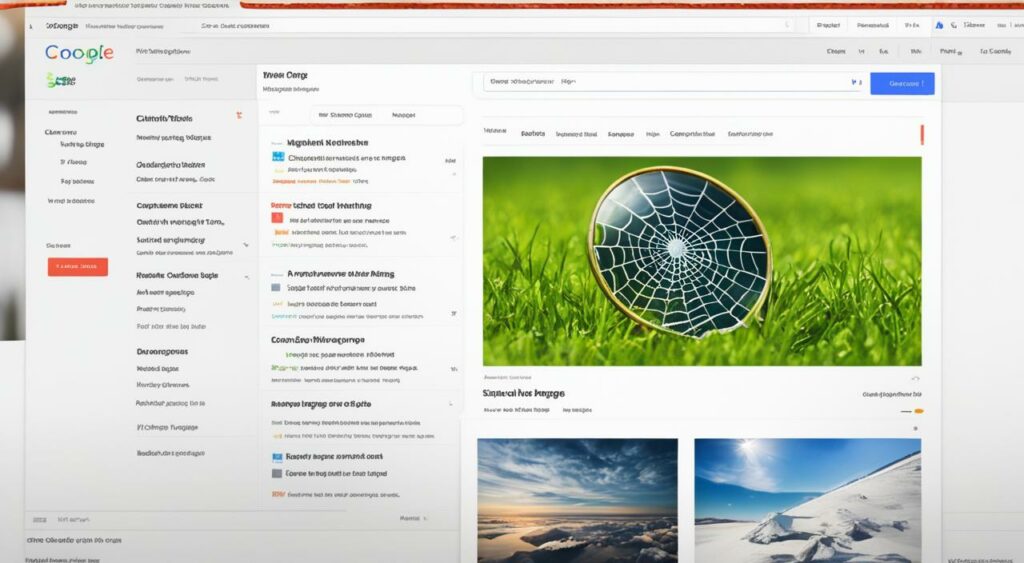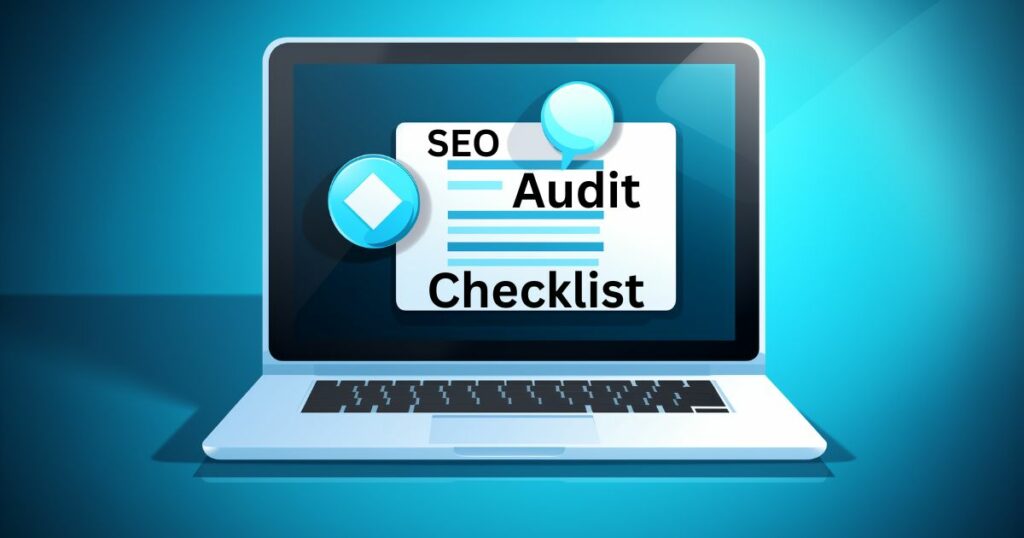I am thrilled to share with you the best practices for on-page SEO that will help you improve the visibility and rankings of your website.
Best Practices for On-Page SEO
On-page SEO is a vital aspect of website optimization, as it allows you to control and optimize different elements of your web pages to make them more attractive to both search engines and human visitors.
By implementing these techniques and strategies, you can increase the chances of your website ranking higher and driving more organic traffic.
On-page SEO involves optimizing various components of your website to enhance its visibility and ranking on search engines. It includes optimizing content, site architecture, and HTML code to make your web pages more favorable to search engine crawlers. It is essential to focus on on-page SEO, as it is one of the key ranking factors considered by Google’s algorithm.
By optimizing the elements that search engines use to crawl, index, and rank your website, you have the power to improve your website’s performance significantly.
The importance of on-page SEO cannot be overstated. It communicates to search engines what your website is about and how it provides value to visitors. By optimizing your website for both search engine bots and human visitors, you enhance the user experience and increase organic visibility. Creating and publishing a website is just the first step; optimizing it to meet search engine criteria is crucial to attract organic traffic.
On-page SEO elements consist of content elements, HTML elements, and site architecture elements. Content elements include keyword research, visual content, and internal linking.
HTML elements include page titles, headers, meta descriptions, and image alt-text. Site architecture elements include structured markup, page URLs, mobile responsiveness, and site speed. Optimizing these elements will improve your website’s visibility, relevance, and overall user experience.
To ensure effective implementation of on-page SEO, it is essential to follow a comprehensive checklist. This checklist includes tasks such as keyword inclusion in URLs, optimizing page titles, using headers effectively, incorporating keywords into body copy, utilizing visual content, adding meta descriptions, optimizing images with alt-text, and incorporating internal and external links.
By following this checklist, you can optimize each individual page of your website for search engine visibility and user engagement.
In conclusion, on-page SEO is a critical aspect of website optimization that plays a significant role in driving organic traffic and improving search engine rankings. By implementing the best practices discussed in this article, you can enhance the visibility, relevance, and overall performance of your web pages.
Keep in mind to regularly review and update your on-page SEO strategies to continuously improve your website’s performance.
Key Takeaways:
- Implementing best practices for on-page SEO can increase your website’s visibility and drive more organic traffic.
- On-page SEO involves optimizing different components of your website to enhance its visibility and ranking on search engines.
- It is important to optimize your website for search engine bots and human visitors to improve the user experience and attract organic traffic.
- On-page SEO elements can be categorized into content elements, HTML elements, and site architecture elements.
- By following a comprehensive on-page SEO checklist, you can optimize each individual page of your website for search engine visibility and user engagement.
What is On-Page SEO?
On-page SEO, also known as on-site SEO, is the process of optimizing various components of your website to improve its visibility and ranking on search engines. It involves optimizing front-end and back-end elements such as content, site architecture, and HTML code to make your web pages more favorable to search engine crawlers.
On-page SEO is one of the three main ranking factors considered by Google’s algorithm, alongside off-page SEO (external factors like backlinks) and technical SEO (site speed, mobile readiness, etc.).
By focusing on on-page SEO, you have the power to control and optimize the elements that search engines use to crawl, index, and rank your website.
“On-page SEO is the foundation of a well-optimized website, playing a crucial role in improving search engine visibility and attracting organic traffic.”
When optimizing webpages for on-page SEO, there are several search engine ranking factors to consider. These factors include content elements, such as keyword usage, relevancy, and quality, and site architecture elements, such as URL structure, sitemaps, and internal linking.
Additionally, HTML elements, such as meta tags, headers, and image alt-text, play a vital role in conveying relevant information to search engines.
By implementing on-page SEO best practices and optimizing these elements, you can enhance your website’s visibility, relevance, and overall performance in search engine rankings.
As search engines constantly refine their algorithms, it’s important to stay updated with the latest on-page SEO techniques and strategies to maintain a competitive edge.
Regularly analyzing your website data and monitoring search engine ranking changes can provide valuable insights into areas that may need improvement, helping you continuously optimize your web pages for better search engine visibility.
Next, we’ll delve into the importance of on-page SEO and why it is essential for attracting organic traffic and maximizing your website’s potential.
On-Page SEO Elements
| Content Elements | HTML Elements | Site Architecture Elements |
|---|---|---|
| Keyword research | Page titles | Structured markup |
| Visual content | Headers | Page URLs |
| Internal linking | Meta descriptions | Mobile responsiveness |
| Image alt-text | Site speed |
Why On-Page SEO is Important
On-page SEO plays a crucial role in communicating the essence and value of your website to search engines, particularly Google. By optimizing your website’s on-page elements, you not only cater to search engine algorithms but also enhance the user experience and attract organic traffic.
It is not enough to simply create and publish a website; optimization is key to achieving higher rankings and driving more visitors to your site.
Search engines, like Google, rely on on-page SEO to understand the content and relevance of a website. On-page optimization ensures that your website meets the criteria set by search engines and aligns with user search intent.
By making the necessary changes and optimizations directly on your web pages, you can enhance the visibility and organic traffic of your site.
One of the key aspects of on-page SEO is its focus on user experience. Optimizing your website’s on-page elements such as content, headings, and images improves the overall usability and satisfaction for visitors.
When users have a positive experience on your website, they are more likely to engage with your content, increasing the chances of conversions and long-term customer relationships.
“On-page SEO communicates the essence and value of your website to search engines, enhances user experience, and attracts organic traffic.”
Another reason why on-page SEO is important is its impact on search intent. Search engines aim to deliver the most relevant and useful results to users based on their search queries.
By optimizing your website’s on-page elements and aligning them with popular search intents, you increase the chances of your website appearing prominently in relevant search results. This drives targeted organic traffic to your site, consisting of users who are actively seeking the information or solutions you provide.
Effective on-page SEO also contributes to site optimization. By optimizing various elements such as page titles, headings, meta descriptions, and image alt-text, you make it easier for search engines to understand and index your website’s content.
This improves the overall structure and organization of your site, making it more accessible and discoverable to search engine bots and users alike.
In summary, on-page SEO is of utmost importance because it communicates the essence of your website to search engines, enhances user experience, aligns with search intent, optimizes site structure, and attracts organic traffic.
By implementing on-page SEO best practices and continuously optimizing your web pages, you can improve the visibility, relevance, and overall performance of your website.
On-Page SEO Elements
On-page SEO encompasses a range of elements that are essential for optimizing your web pages and improving their visibility and relevance. These elements can be divided into three main categories: content elements, HTML elements, and site architecture elements.
Content Elements
When it comes to on-page SEO, content plays a crucial role. By focusing on keyword research, visual content, and internal linking, you can enhance the optimization of your web pages.
- Keyword research: Conducting thorough keyword research helps you understand the terms and phrases your target audience is using in their search queries. This insight allows you to optimize your content accordingly and improve your rankings on search engine results pages (SERPs).
- Visual content: Incorporating visual elements such as images, infographics, and videos not only enhances user engagement but also provides opportunities for optimization. By using alt-text for your images and videos, you can make them more accessible to search engines and improve your overall SEO.
- Internal linking: Internal links are hyperlinks that connect different pages within your website. By strategically placing internal links, you can improve site navigation and encourage visitors to explore more of your content. Internal linking also helps search engines understand the hierarchy and relevance of your web pages.
HTML Elements
HTML elements are crucial for on-page SEO as they provide important information to search engine crawlers. By optimizing page titles, headers, meta descriptions, and image alt-text, you can improve the visibility and relevance of your web pages.
- Page titles: Page titles should accurately describe the content of the page while incorporating relevant keywords. They appear as the clickable headline on SERPs and play a significant role in attracting clicks and improving your search engine ranking.
- Headers: Headers, denoted by H1, H2, H3 tags, help structure your content and make it more readable for both users and search engines. Incorporating relevant keywords in your headers can improve your on-page optimization.
- Meta descriptions: Meta descriptions are short summaries that appear below the page title in SERPs. By writing compelling meta descriptions that include relevant keywords, you can increase the likelihood of users clicking through to your website.
- Image alt-text: Image alt-text is used to describe the content of an image to search engines. By optimizing the alt-text with relevant keywords, you can improve the visibility of your images in image searches and enhance the overall SEO of your web pages.
Site Architecture Elements
The structure and architecture of your website also play a significant role in on-page SEO. By focusing on structured markup, page URLs, mobile responsiveness, and site speed, you can enhance user experience and improve search engine rankings.
- Structured markup: Implementing structured markup, such as schema.org tags, helps search engines understand the specific content and context of your web pages. This can lead to enhanced visibility in search results through rich snippets and other SERP features.
- Page URLs: Optimized page URLs that include relevant keywords improve the understandability and relevance of your web pages. Use descriptive and concise URLs to make it easier for both users and search engines to navigate your site.
- Mobile responsiveness: With the majority of internet users accessing websites on mobile devices, ensuring your site is mobile-responsive is crucial. A responsive site adapts to different screen sizes, providing a seamless user experience and improving your SEO performance.
- Site speed: Site speed is an important ranking factor for search engines. Optimizing your website’s loading time enhances user experience and reduces bounce rates. By compressing images, minifying code, and utilizing caching techniques, you can improve your site’s speed and search engine rankings.
By paying close attention to and optimizing these on-page SEO elements, you can significantly improve your website’s visibility, relevance, and overall user experience.

On-Page SEO Checklist
To ensure that you are effectively implementing on-page SEO, it is important to follow a comprehensive checklist.
This checklist includes key tasks and optimizations to apply to each individual page of your website. It covers important areas such as keyword inclusion in URLs, optimizing page titles, using headers effectively, incorporating keywords into body copy, utilizing visual content, adding meta descriptions, optimizing images with alt-text, and incorporating internal and external links.
By following this on-page SEO checklist, you can ensure that each web page is optimized to its fullest potential for search engine visibility and user engagement.
Here is a breakdown of the essential components of the on-page SEO checklist:
1. Keyword Inclusion in URLs
Optimize your page URLs by incorporating relevant keywords that accurately reflect the content of the page.
2. Optimizing Page Titles
Create concise and descriptive page titles that include targeted keywords to improve search engine visibility and click-through rates.
3. Effective Header Usage
Use headers (H1, H2, H3, etc.) strategically to organize your content and signal its relevance to search engines. Incorporate keywords in your headers to improve keyword prominence and optimize for relevant search terms.
4. Keyword Inclusion in Body Copy
Ensure that your body copy contains relevant keywords naturally and organically. Avoid keyword stuffing and focus on creating valuable and informative content that resonates with your target audience.
5. Utilize Visual Content
Incorporate high-quality images, graphics, videos, and infographics to enhance user engagement and improve the overall visual appeal of your web pages.
6. Meta Descriptions
Create compelling meta descriptions that accurately summarize the content of each web page. Include relevant keywords and entice users to click on your search result.
7. Image Optimization with Alt-Text
Optimize your images by adding descriptive alt-text that includes relevant keywords. This improves accessibility and helps search engines understand the context and content of the images.
8. Internal and External Linking
Incorporate relevant internal and external links throughout your web pages to provide additional value to users and enhance search engine visibility.
By following this on-page SEO checklist, you can ensure that your individual web pages are optimized effectively, improving search engine visibility and user experience.
Conclusion
On-page SEO is a critical aspect of website optimization that plays a significant role in driving organic traffic and improving search engine rankings. By implementing the best practices for on-page SEO discussed in this article, you can enhance the visibility, relevance, and overall performance of your web pages.
Thorough keyword research is the foundation of a successful on-page SEO strategy. By understanding the search intent of your target audience and strategically incorporating relevant keywords into your website’s content, headers, and meta descriptions, you can attract organic traffic and improve your search engine rankings.
Optimizing content elements, such as visual content and internal linking, along with HTML elements like page titles and image alt-text, further increases your website’s appeal to both search engine bots and human visitors.
Additionally, paying attention to site architecture elements, including structured markup, page URLs, mobile responsiveness, and site speed, ensures a seamless user experience and better search engine visibility.
To maintain a competitive edge in the ever-evolving digital landscape, it is crucial to regularly review and update your on-page SEO strategies. By staying up-to-date with the latest best practices, you can continuously improve your website’s performance and outperform your competitors.
FAQ
What are some best practices for on-page SEO?
Some best practices for on-page SEO include conducting thorough keyword research, optimizing page titles, using headers effectively, incorporating keywords into body copy, utilizing visual content, adding meta descriptions, optimizing images with alt-text, and incorporating internal and external links.
What is on-page SEO?
On-page SEO, also known as on-site SEO, is the process of optimizing various components of your website to improve its visibility and ranking on search engines. It involves optimizing front-end and back-end elements such as content, site architecture, and HTML code to make your web pages more favorable to search engine crawlers.
Why is on-page SEO important?
On-page SEO is important because it communicates to search engines what your website is about and how it provides value to visitors. It ensures that your website is optimized for search engine bots and human visitors, enhancing both user experience and organic visibility. By optimizing your web pages, you increase the chances of ranking higher and attracting organic traffic.
What are the elements of on-page SEO?
The elements of on-page SEO include content elements (keyword research, visual content, internal linking), HTML elements (page titles, headers, meta descriptions, image alt-text), and site architecture elements (structured markup, page URLs, mobile responsiveness, site speed).
These elements contribute to the optimization of your web pages and improve visibility, relevance, and overall user experience.
What should be included in an on-page SEO checklist?
An on-page SEO checklist should include tasks such as keyword inclusion in URLs, optimizing page titles, using headers effectively, incorporating keywords into body copy, utilizing visual content, adding meta descriptions, optimizing images with alt-text, and incorporating internal and external links.
Following this checklist ensures that each web page is optimized for search engine visibility and user engagement.


